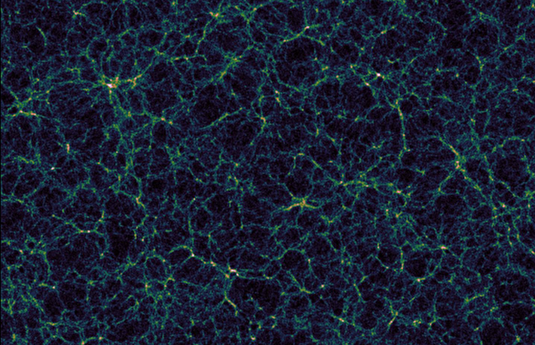Cosmology: Lore of lonely regions

A research group led by Ludwig-Maximilians-Unversitaet (LMU) in Munich physicist Nico Hamaus is calculating the dynamics of cosmic voids and deriving new insights into our entire universe.
Much of our universe is taken up by vast, hollow regions of empty space, which we call cosmic voids. They are forever expanding as the tiny amounts of matter they contain are striving to reach the outer edges, attracted by the gravity of the denser regions surrounding them. The large-scale universe therefore resembles a cosmic web, with immense, vacuous bubbles surrounded by filaments of matter in which the galaxies are distributed. LMU physicist Dr. Nico Hamaus and colleagues analyzed data from the Sloan Digital Sky Survey (SDSS), in which scientists are mapping the structure of the universe through a telescope, and have computed the composition and geometry of the voids.
The researchers' analyses show how rapidly the voids are expanding. "By analyzing the cosmic voids, Nico Hamaus has succeeded for the first time in narrowing down cosmological models," says Professor Jochen Weller of the University Observatory of LMU. Hamaus has published his findings in the journal Physical Review Letters. His calculations demonstrate that the analysis of cosmic voids is a suitable approach to investigating gravity in the empty regions of the universe, and at the same time determining the total density of matter in the universe.
His study thus provides important clues to the question of why the universe is expanding at an increasing rate. So far, cosmology has proposed two possible answers to this: It could be due to the dark energy that makes up almost 70 percent of our universe, and which some believe exerts a kind of anti-gravitational force, or it could be that Einstein's General Theory of Relativity is only partly correct, and we need a new theory of gravity. "If there were any deviations from the General Theory of Relativity in the universe, those would be particularly prominent in cosmic voids. However, we detected no significant deviations in our analyses," says Hamaus. The results therefore corroborate the prevailing notion of gravity in the universe, which had never been tested on voids before, and so supports the assumption that there must be some form of dark energy that equates to a cosmological constant. "Our study shows that we can learn a lot more about the origin and evolution of our universe from analyzing cosmic voids."
More information: Physical Review Letters, journals.aps.org/prl/accepted/ … 9e15eafa65551505cbae
Journal information: Physical Review Letters
Provided by Ludwig Maximilian University of Munich





















